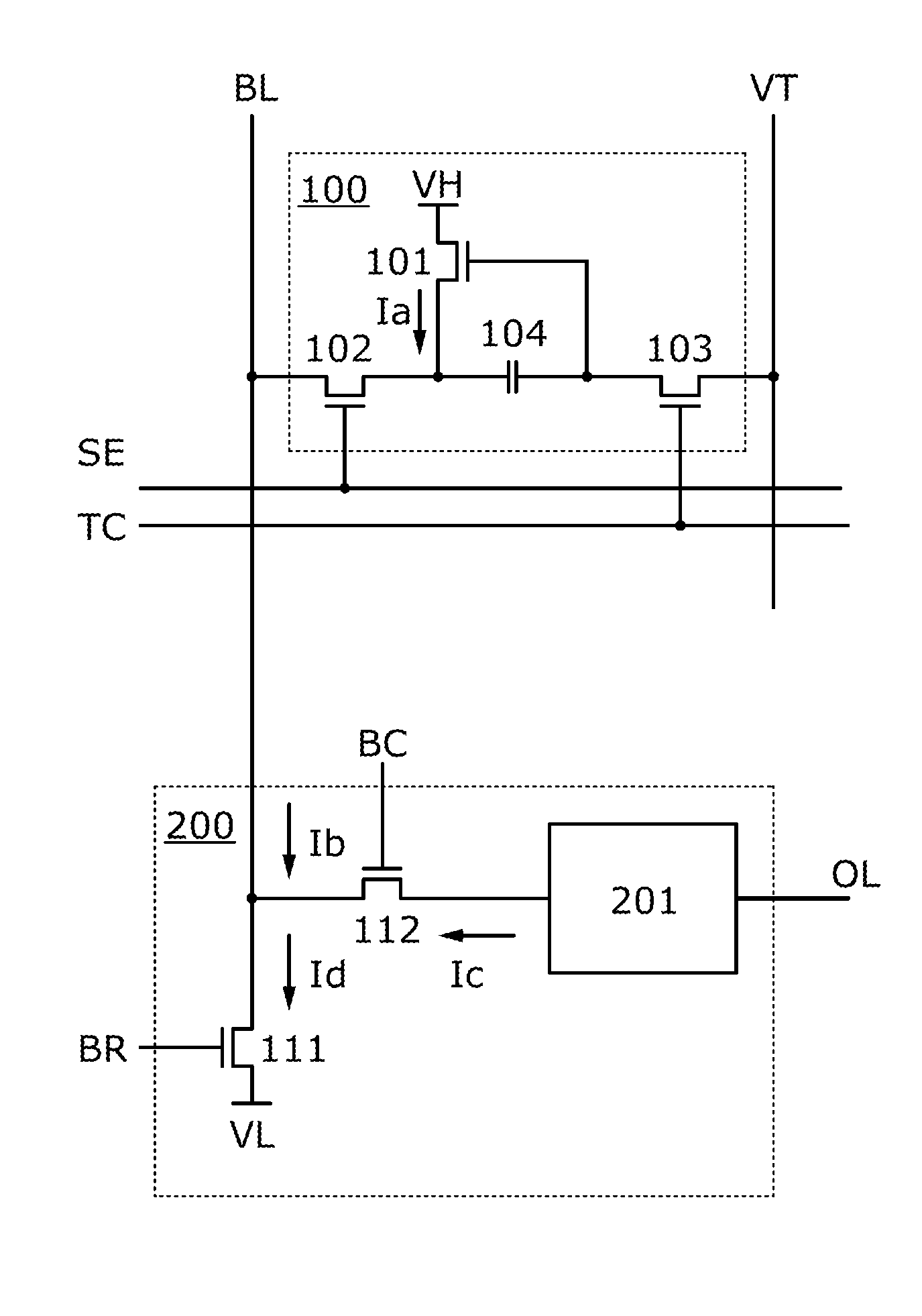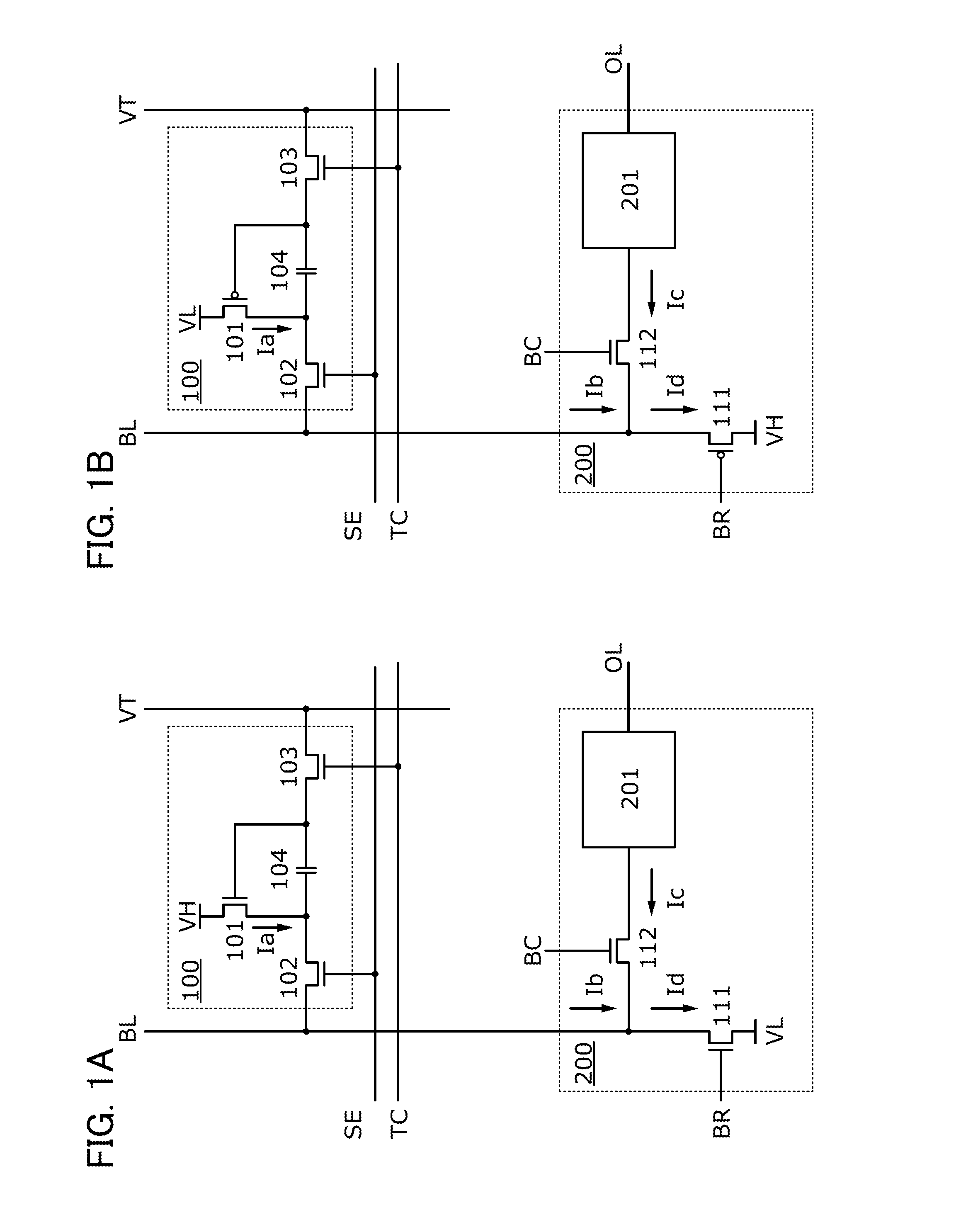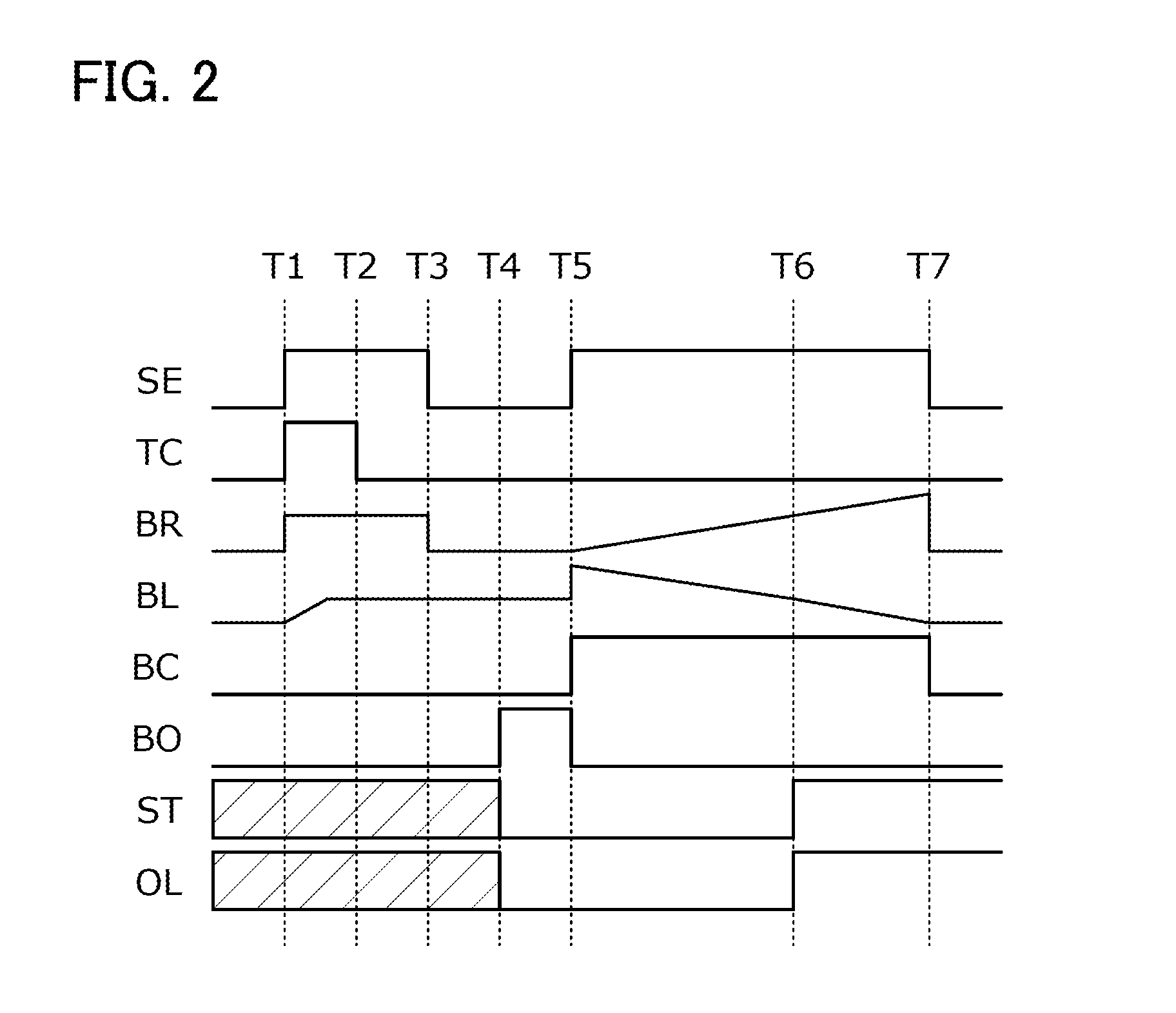Semiconductor device
a technology of semiconductors and semiconductors, applied in the field of semiconductor devices, can solve the problems of consuming a lot of resources, and achieve the effects of reducing the area of a memory cell, reducing the manufacturing cost per unit storage capacity, and reducing the area per bi
- Summary
- Abstract
- Description
- Claims
- Application Information
AI Technical Summary
Benefits of technology
Problems solved by technology
Method used
Image
Examples
embodiment 1
[0058]A semiconductor device of one embodiment of the present invention will be described with reference to FIGS. 1A and 1B, FIG. 2, and FIG. 3.
[0059]FIG. 1A illustrates a configuration example of a memory cell 100 and a write / read circuit 200.
[0060]The memory cell 100 includes a transistor 101, a transistor 102, a transistor 103, and a capacitor 104. To the memory cell 100, a voltage is supplied through a wiring VH and a wiring VT, and control signals are supplied through a wiring SE and a wiring TC. Data of the memory cell is input to and output from a wiring BL.
[0061]A drain of the transistor 101 is connected to the wiring VH. A source of the transistor 101 is connected to a first terminal of the capacitor 104 and a source of the transistor 102. A gate of the transistor 101 is connected to a second terminal of the capacitor 104 and a drain of the transistor 103. A drain of the transistor 102 is connected to the wiring BL. A gate of the transistor 102 is connected to the wiring SE...
embodiment 2
[0095]In this embodiment, an example of a semiconductor device including the memory cell described in Embodiment 1 will be described.
[0096]FIG. 4 is a block diagram illustrating a configuration example of a semiconductor device.
[0097]A semiconductor device 300 illustrated in FIG. 4 includes a memory cell array 301, a row driver 302, and a column driver 303.
[0098]The memory cell array 301 is provided with a plurality of memory cells 100, a plurality of wirings SE, a plurality of wirings TC, a plurality of wirings BL, and a plurality of wirings VT. The memory cells 100 are arranged in a matrix of m rows and n columns (m and n are integers of 2 or more). There are typically illustrated in FIG. 4 four memory cells 100, a wiring SE[m−1] as a word select line for an (m−1)-th row, a wiring TC[m−1] as a word control line for an (m−1)-th row, a wiring SE[m] as a word select line for an m-th row, a wiring TC[m] as a word control line for an m-th row, a wiring BL[n−1] as a bit line for an (n−1...
embodiment 3
[0132]In this embodiment, examples of OS transistors which can be used in the semiconductor device described in Embodiment 1 will be described.
[0133]FIGS. 9A to 9D are a top view and cross-sectional views of a transistor 600. FIG. 9A is the top view. FIG. 9B illustrates a cross section along the dashed-dotted line Y1-Y2 in FIG. 9A. FIG. 9C illustrates a cross section along the dashed-dotted line X1-X2 in FIG. 9A. FIG. 9D illustrates a cross section along the dashed-dotted line X3-X4 in FIG. 9A. In FIGS. 9A to 9D, some components are scaled up or down or omitted for easy understanding. In some cases, the direction of the dashed-dotted line Y1-Y2 is referred to as a channel length direction and the direction of the dashed-dotted line X1-X2 is referred to as a channel width direction.
[0134]Note that the channel length refers to, for example, a distance between a source (source region or source electrode) and a drain (drain region or drain electrode) in a region where a semiconductor (o...
PUM
 Login to View More
Login to View More Abstract
Description
Claims
Application Information
 Login to View More
Login to View More - R&D
- Intellectual Property
- Life Sciences
- Materials
- Tech Scout
- Unparalleled Data Quality
- Higher Quality Content
- 60% Fewer Hallucinations
Browse by: Latest US Patents, China's latest patents, Technical Efficacy Thesaurus, Application Domain, Technology Topic, Popular Technical Reports.
© 2025 PatSnap. All rights reserved.Legal|Privacy policy|Modern Slavery Act Transparency Statement|Sitemap|About US| Contact US: help@patsnap.com



